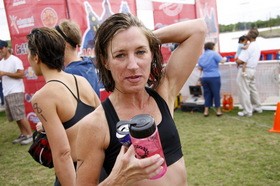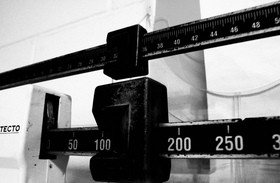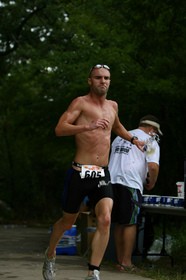 We adopt our views of health and nutrition from a variety of sources, and it’s not uncommon for a triathlete to drag a nutrition myth or two into the sport.
We adopt our views of health and nutrition from a variety of sources, and it’s not uncommon for a triathlete to drag a nutrition myth or two into the sport.
Some of these myths could easily prevent a triathlete from performing optimally.
Here are 4 nutrition myths that the typical triathlete may be in danger of believing…
Myth 1: Fat is bad.
We’ve all been made to fear fat. However, fat plays a vital role in the performance of a triathlete.
Fat is the body’s most efficient source of energy.
Every gram of fat provides 9 calories, compared with 4 each for protein and carbohydrates.
If you’ve been on a low-fat diet, it’s likely that by increasing fat in your diet you will improve in the area of training and event recovery and increase your capacity to train at a high level.
The recommended fat intake for athletes is about 0.5 grams of fat per pound of body weight per day. For example, this would be 60 to 80 grams per day of dietary fat for triathletes who weigh between 120 and 160 pounds.
Don’t cut out fat. Instead, get your needed fat grams from healthful sources such as:
- nuts
- peanut butter
- olive and canola oil
- avocado
- cold water fish, such as tuna.
The good fats are “monounsaturated” and “omega-3.” When you carb-load, choose pasta and breads; don’t fat-load on Alfredo sauce, butter, cheese, chips, and donuts.
Eating 20% to 30% of your calories from good fats is sound nutrition advice for endurance athletes and will help improve your triathlon training and racing.
Myth 2: Thinner is better.
 Don’t try to get your body fat below 5% (men) or 12% (women). Each athlete has a fat percentage and body weight at which he or she performs best. Hence, you should listen to your body and take note of how you feel and perform, as opposed to force your body to achieve a self-selected number.
Don’t try to get your body fat below 5% (men) or 12% (women). Each athlete has a fat percentage and body weight at which he or she performs best. Hence, you should listen to your body and take note of how you feel and perform, as opposed to force your body to achieve a self-selected number.
Keep in mind that body fat measurements (even under research conditions) can be plus or minus 3 to 4%. If you are told your body fat is 16%, it might be 13% or 19%. Just having a different person measure your body fat can significantly alter the measurement.
Use body fat measurements only as a guide, and give yourself a body fat range.
Myth 3: Ingest a soft drink or candy bar just before competition for better performance.
Sugary foods eaten just before competition do not improve your speed or strength.
That’s because it takes the body 1 to 4 hours to digest food. So, foods eaten just before an event are in your stomach when you compete. Most of the energy used in competition or practice comes from food, eaten days before the event that has been stored in your muscles.
It’s true that before the era of sports drinks, elite runners used flat cola or orange juice to refuel during long runs. Sports drinks are superior to soda in the nutrients they provide. The sugar and caffeine boost of a soda or candy bar may provide a temporary pick-me-up — and some claim it settles their stomach.
But keep in mind that fructose, sucrose, glucose, and other simple sugars (mono- and disaccharides) are poor carbohydrate sources for fueling your body during exercise. Complex carbohydrates (polysaccharides) are the best choice for endurance athletes, because they allow your digestive system to rapidly and efficiently process a greater volume of calories, providing steady energy.
Some drink soda like others drink coffee, which is fine in moderation. A soda or candy bar before a race may provide a temporary energy boost, but don’t expect it to do any more than that. I wouldn’t advise starting it if it’s not something you are accustomed to doing. If you must, try it for a few training sessions and see if it makes any difference.
Myth 4: Drink when you are thirsty.
 Water is the most important nutrient, but thirst is a poor indicator of how much water your body needs.
Water is the most important nutrient, but thirst is a poor indicator of how much water your body needs.
Athletes don’t know they’re thirsty until they already have a deficit. It’s best to
“prehydrate” — drink fluids before you feel thirsty, and keep drinking throughout competition or training.
Determining your “sweat rate” can help determine your proper hydration needs. One way of doing this is comparing your nude body weight before and after an event or training session. The difference is water loss, which helps determine how to replace it. One pound of weight loss equals 2 cups of water.
It’s common for a triathlete in competition to be 2% dehydrated. That translates to 6 cups of water for a 150-pound person. Even at 2% dehydration, your performance and concentration are affected.
It is recommended to get in 8 to 12 cups of water a day (based on your body size and training load) and an additional 2 cups for every pound lost during competition or training.
I’m over 40 years old, but I don’t give up easily. It wasn’t too long ago that I was exploring the idea of doing my first triathlon. If I can do it, you can too! I'm proof that with a little determination and training, you can get a great deal of fulfillment participating in marathons, triathlons… even ultramarathons.




